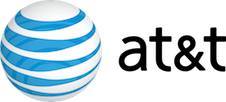need-to-know 1084

excerpt from recent interview (link is external)with Rick Welday, president of AT&T AdWorks, 13 October 2016.
…AT&T is doubling down to understand the network effect of its merged mobile carrier and pay TV footprint. And it plans to up its investment in video programming by acquiring more of the content supply chain…Cross-screen targeting is also a big imperative. AT&T just completed a series of targeting pilots to measure the impact of addressable TV ads served to 14 million AT&T-DirecTV households and 30 million associated devices….AT&T has the opportunity to be the first fully integrated carrier in the United States. You’re taking a large MVPD, pay-TV provider and a scaled mobile and broadband business and bringing them together, and that’s unique. Today, we help advertisers place an ad based on interest or demographics in any one of 14 million households regardless of what they’re watching or when, whether it’s live or on playback. …When the DirecTV merger completed, we had 12 million addressable households. We’re now [at] nearly 14 million. For us to have grown addressable households by 2 million shows our commitment. Out of those 14 million homes, we can identify about 30 million devices that are associated and help marketers identify their target audience across them without sharing personally identifiable information.
Do you have a data management platform that would help you track consumer movement? We have data coming from 35 million set-top boxes, so we have incredible first-party data capabilities. We have to have a deep technical ability and transparency with our clients about where and when the ads get placed. Clients are more interested in making sure the ad gets to their targeted audience, but we still share information about the content and day part where the ad fired. Usually the client connects their data to a safe haven, where we’d [also include] our inventory and see where there’s overlap. Then we’d render the ads. There’s a long list of people we partner with, like Experian, Acxiom, Kantar and Polk. Where do you see the most opportunity for AT&T’s mobile data subscriber set? Will it, for instance, help close the loop between location, the in-store purchase and TV viewership? Right now we’re not using data from our mobile customers, but we’re well aware of the opportunity for them to consume more video solutions and advertising within our developing video services. We’re very excited about our ability to monetize through advertising within our mobile base. How that evolves, there’s nothing further we’d forecast or announce right now. Who is AT&T’s biggest competitor right now? Is it other telcos or are you keeping an eye on platforms with a large, logged-in user base like Facebook? There’s no question Facebook and Google are competitors. There is no shortage of options for advertisers. Everybody knows a lot of money is moving to the digital space. I think, for us, when we look at wwhere the growth is, it’s clearly going toward targeted, more audience-based advertising. Even in digital, growth is not riding on the backs of display or search advertising. It’s coming from mobile video. AT&T, having acquired DirecTV with the stated purpose of being an integrated carrier that specializes and leads and innovates in mobile video, that’s a good thing for us….When the DirecTV merger completed, we had 12 million addressable households. We’re now [at] nearly 14 million. For us to have grown addressable households by 2 million shows our commitment. Out of those 14 million homes, we can identify about 30 million devices that are associated and help marketers identify their target audience across them without sharing personally identifiable information.
Excerpt 2: (link is external) The cross-device implications of an AT&T/Time Warner hookup are also clear: massive reach, distribution and data. It claims to have 141.8 million wireless customers in the US and Mexico, 15.6 million internet connections and 45.5 million video connections across DirecTV and U-verse. “It’s a significant audience, especially when you bring DirecTV into the mix, being able to use that data and that deterministic linking for more relevant messaging across all of those different sources, both owned-and-operated, and being able to take that outside of O&O across multiple channels and screen,” said Adelphic CEO Michael Collins. Both AT&T and Time Warner have deterministic user data across a wide array of channels. “They have it through DirecTV, they have it through AT&T’s ISP and AT&T’s television service and they have it through Time Warner’s wide distribution,” Collins said. “That’s sticky content and a very broad audience, and it’s all done on a deterministic basis, which makes it pretty powerful. I don’t know if you’d say it’s unique, but it’s certainly highly differentiated.” AT&T is already schooled in the ways of cross-device. Its privacy policy very clearly states that it uses both Tapad and Drawbridge “to establish connections between a user’s devices and to provide behavioral targeting across devices,” noting that “cross-device connections allow AT&T to understand that a single user is accessing AT&T services from multiple devices, and to synchronize content and advertising messages across those devices.” It’s only logical that AT&T will take its cross-device program to the next level with Time Warner on board. “One would have to imagine that Time Warner and AT&T are looking to bring content and distribution together for seamless distribution and content across screens,” Collins said. “But marketing and advertising are evolving as well, and the potential combination of Time Warner and AT&T would give them knowledge, insight and the ability to deliver highly relevant advertising on behalf of advertisers.”

